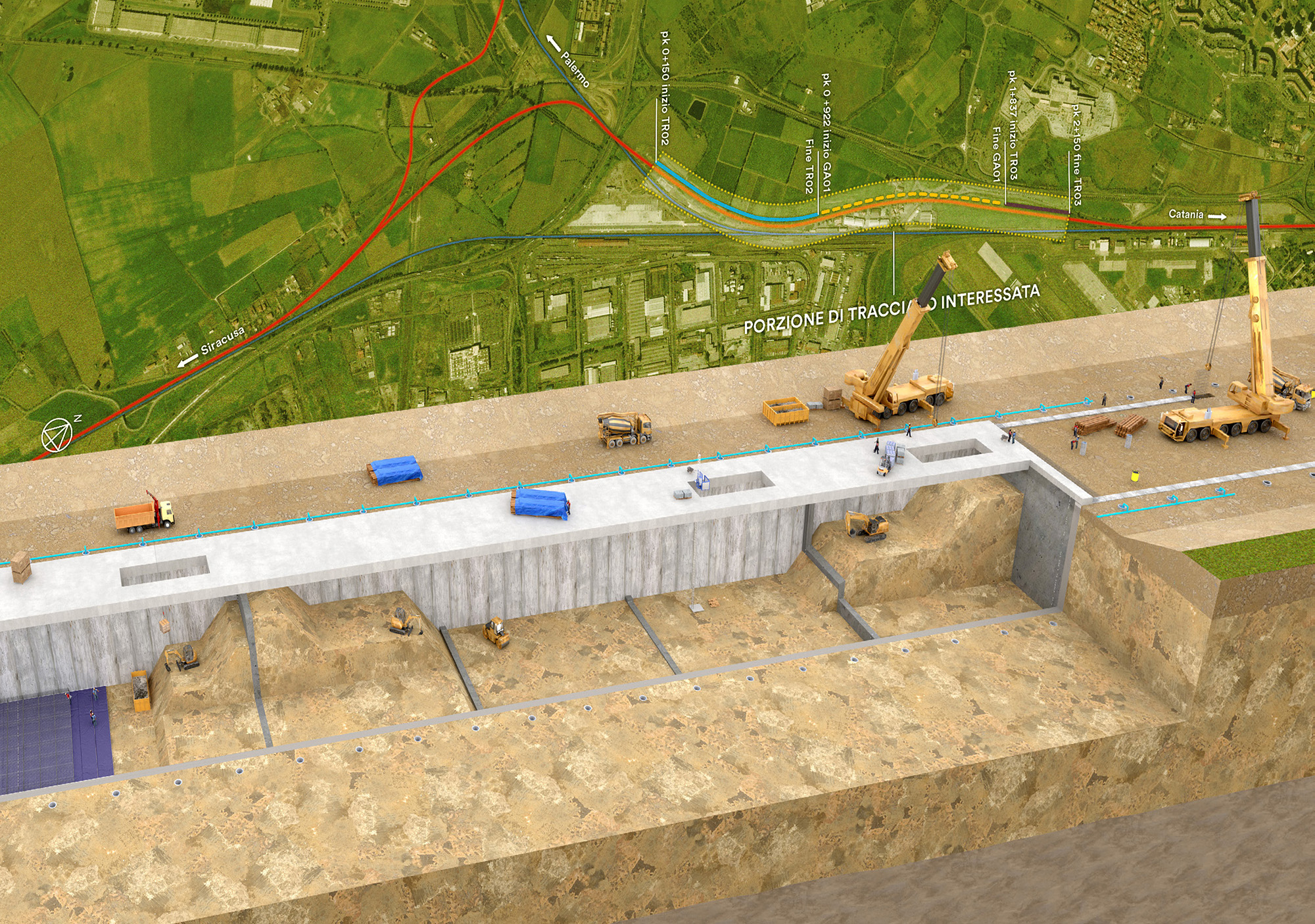Catania railway junction
Award of contract for the undergrounding of the railway line near the Catania Fontanarossa airport

Proger is the leader of the JV of engineering companies, composed of Progin and S.T.E, indicated by the JV of construction companies, led by Eteria, with Euro Ferroviaria and Salcef, to which RFI has awarded the integrated contract for the “executive design and execution of works for the construction of the Messina – Catania – Palermo railway line, Catania junction”: underground railway project to allow the extension of the Fontanarossa airport runway and adaptation to the Technical Specifications for Interoperability of the section concerned, as well as technologies and equipment for the third track at Fontanarossa station”.
The project, worth over €370 million, consists of the undergrounding of the section of railway that obstructs the extension of the Catania-Fontanarossa airport runway, with the construction of an artificial tunnel and trenches over a length of about 3 kilometres. The project also includes the modification of the Catania-Siracusa line, the construction of a new branch line for direct connections between Syracuse and Palermo and the new Bicocca station, with a new freight terminal in the existing facility, and the transformation of the Catania Aeroporto Fontanarossa stop into a station with the construction of a third track.
The works, which form part of the new Palermo-Catania-Messina railway line, are of fundamental importance for mobility in Catania and Sicily: on the one hand, because they prepare the ground for the construction of the new runway at the Airport, on the other hand, because they improve the railway connection with Catania Fontanarossa Airport by upgrading the Catania Fontanarossa Airport station, modernising the Bicocca station, the most important freight terminal in Sicily, and bringing the railway line up to European standards.
Among the improvement solutions proposed by the Proger working group, we highlight two areas in particular: hydraulic interference of the water table with the underground works, for which solutions of efficiency, technological improvement and simplification of the construction site were proposed; water sustainability of the construction site, which has led to an estimated reduction in water supply of 3.4 million m3 of water, equivalent to 1,360 olympic swimming pools, thanks to the recovery and reuse between 90% and 100% of civil, industrial and meteoric water, achieved through the use of innovative products and point devices to reduce consumption, efficiency systems and smart monitoring.